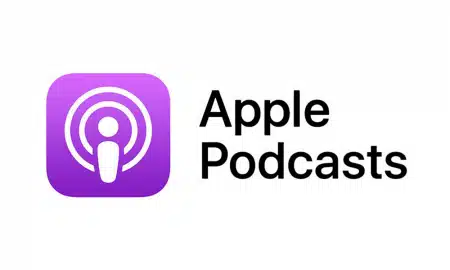SMPTE 2110: HOW TO DEPLOY AN IP-BASED INFRASTRUCTURE
IP Video for broadcast has transitioned from a novelty to a necessity – as broadcasters everywhere looking for a way to reduce system connectivity complexity by reliably – and cost-effectively – transporting high bit-rate media across an IP-based network and through the public internet while simultaneously riding the wave IP technology advancement and cost reduction. SMPTE 2110 is the accredited standard for achieving the same reliability and interoperability that the industry attained with SDI signals over coax and fiber but with the added advantages of bi-directional communications and data recovery through a packetized stream over standard IP Networking. In the video, we brought together a panel of SMPTE ST 2110 Experts:- Ciro Noronha, Executive Vice-President of Engineering at Cobalt Digital, a Consulting Professor at Stanford University, and the holder of 7 patents.
- Robert Erickson, Strategic Account Manager Sports and Venues at Grass Valley, and a former Director of Advanced Technology.
- John Mailhot, CTO & Director of Product Management, Infrastructure & Networking at Imagine Communications, a SMPTE Fellow, and chairman of the SMPTE 2110 committee.
- Thomas Edwards, Principal Solutions Architect & Evangelist at Amazon Web Services (AWS), and a former Vice President of Engineering & Development at FOX and Disney for over 12 years.
Defining SMPTE 2110 and IP Video
Before we get to our expert panel discussion- we need to spend a few minutes defining IP video protocols and the various SMPTE standards. When it comes to IP video protocols, it’s a lot like video and image file types- there are several protocols available – each with their own strengths. Let’s briefly review some of these others before we get into 2110… IP Video & Live Streaming Protocols Include:- NDI – NDI comes in two flavors- compressed NDI | HX, and full NDI. NDI|HX is a lot like H.264. Its transmission bandwidth is adjustable, with 1080P60 video defaulting to 10Mbps. Full NDI is an I-frame intra-frame compression scheme. During the transmission process, full NDI consumes a certain bandwidth – HD needing 90-180Mbps and 4K with 200-300Mbps required. With NDI transmission, we recommend a Gigabit network that is suitable for applications that require high image quality, such as program production. There is a full suite of free- super-helpful NDI tools- that can do everything from a screen capture on a computer or a device on the network, to converting multiple guests from a Microsoft Teams call into unique inputs on your video switcher. Delay for NDI on a local network is typically less than 100ms or about 1 to 3 frames. NDI is also best suited for local area networks, although there are applications that can help broadcast NDI over the internet.
- SRT – SRT is a transmission protocol based on the H.264 / H.265 compression scheme. The focus here is on delivering high-quality video. SRT’s anti-packet loss mechanism is an ARQ, which is an Automatic Repeat Request error correction mechanism, removing jitter or packet drops that can sometimes happen to video. Delay for point-to-point transmission is under 1s. SRT is made to transmit signals over the internet but it is important to note that SRT transmission applications require a fixed public IP address on either the sender or the receiver.
- RIST – The Reliable Internet Stream Transport protocol is similar to SRT, containing a special packet loss algorithm that reduces error, providing high quality and highly reliable broadcast stream. RIST is unique when it comes to protection. RIST Safelink protects live video and audio over unsecured networks.
- RTMP, Dante, Others etc. There is also RTMP streaming, which is arguably on its way out but is used heavily by FLASH and Mobile IOS and ANDROID streaming apps AND DANTE and AES67 for audio- and many more than we’re not listing here. And that’s the point – with all these IP “cars” driving ‘fast’ on the virtual highway, we need to create standards and best practices – to keep each video or audio stream in its lane.
Defining SMPTE Standards
The SMPTE 2110 Suite of Standards is helping to drive the development of IP workflows in a responsible way that benefits the industry. Let’s take a look at the types of standards available so far. TYPES OF SMPTE STANDARDS INCLUDE:- SMPTE ST 2110-10/-20/-30 address system concerns and uncompressed video and audio streams
- SMPTE ST 2110-21 specifies traffic shaping and delivery timing of the uncompressed video
- SMPTE ST 2110-31 specifies the real-time, RTP-based transport of AES3 signals over IP networks, reference to a network clock
- SMPTE ST 2110-40 maps ancillary data packets (as defined in SMPTE 291-1) into RTP (Real-Time Transport Protocol) packets that are transported via UDP/IP (User Data Protocol/Internet Protocol) and enables those packets to be moved synchronously with associated video and audio essence streams
Key Products To Consider in SMPTE Workflows
We want to highlight a few product solutions to consider for your SMPTE Infrastructure. Key Code Media is a system integrator for these product lines- providing customers pricing information, demonstration, or a free consultation.- Cobalt Digital – Cobalt is known for its “throw-downs” single-channel gateways, dual-channel multi-rate reclocking DA, and up/down/cross convert /frame sync solutions. The Cobalt® 9904-UDX-4K-IP 12G/6G/3G/HD/SD UHD Up/Down/Cross Converter/Frame Sync with Dual 10GigE IP Ports is Cobalt’s next generation of advanced scaler/frame synchronizers for the openGear® platform. The 9904-UDX-4K-IP upconverts 12G/6G/3G/HD/SD to either UHD1 3840×2160 Square Division Multiplex (SDM) or Two-Sample Interleave (2SI) quad 3G-SDI based formats or can output ST 2082 12G-SDI for single-wire 4K transport. With both 12G-SDI and quad 3G-SDI inputs, the 9904-UDX-4K can downconvert 12G and quad UHD.
- Grass Valley – Grass Valley has quite a few cameras supporting SMPTE 2110 standard. Their latest LDX100 series use a new 2/3-inch Titan imager to capture Ultra High Definition (UHD) High Dynamic Range (HDR) images at 3X high speed. It also supports And it supports JPEG XS
- Imagine Communications – Imagine Communications has a variety of SMPTE 2110 pieces of an end-to-end workflow- SDI-TO-IP, IP-TO-IP, Broadcast Router Control, Multiviewers, Playout Master Control, Ingest, Transcode, Encode to delivery. Today we’re highlighting the Selenio Network Processor with production multiviewer personality (SNP-MV). Integrating with industry-standard Tally/UMD and routing protocols, including NMOS IS-04/05, the SNP-MV delivers enhanced production agility through low-latency operator interaction with HDR or SDR, and a lot of customization and flexibility built-in.
- Amazon Elemental Live Encoder – AWS Elemental Live supports ingest and output of SMPTE-2110 video, audio, and ancillary data using a 10 Gb or higher Ethernet network card installed on your appliance. It’s the perfect solution for deploy anywhere, deliver anywhere encoding solution processing video in real-time, delivering to a variety of television and internet-connected devices.
- Telestream – Telestream Inspect 2110 monitors ST 2110 IP video networks providing the automated visibility and diagnostics operations teams need. Broadcast production is changing from SDI to IP video bringing several benefits in flexibility, scale, and efficiency. Make sure everything is working before you go live.
- Matrox – Matrox VERO is an essential tool for broadcasters, system integrators, and manufacturers of ST 2110 devices and environments. Matrox VERO integrates the components required to allow users to confidently validate ST 2110 devices for compliance before deployment.
- Arista Networks – Arista Networks is the gold standard in the industry for broadcast, over-the-top and streaming media network infrastructures. Their products include tools such as real-time analytics, scalable multicast, and scalable PTP, the three pillars for any successful standardized SMPTE 2110 deployment. And with open API’s for broadcast controllers such as Imagine’s Magellan or Grass Valley’s Orbit, Arista enables tight integration with system orchestration that is feature-rich and bug-free. Available in sizes from 48 ports of 1Gbps to 512 ports of 400 Gbps.
Why Build SMPTE 2110 Workflows With Key Code Media? A Team For Your Team
Key Code Media is the preferred dealer and systems integrator for installing and supporting large-and-small broadcast studios, mobile truck, and fixed facilities, as well as fly pack and remote production systems. Our success in designing, installing, and supporting broadcast systems comes from our eclectic and experienced team that successfully installs a broad range of audiovisual, broadcast, and post-production equipment solutions. Combined with our 24/7 KTC after-market support plans and certified training, your team has everything it needs to implement your ideal system with ease.
Lastly, our Key Code Education school provides industry-recognized certification. And if you work for a qualified ETP media company, your entire staff can get trained for free. We are just about to launch a new ‘engineer track’ certification program- so contact us or subscribe to our newsletter to learn more when that becomes available.
Let the Key Code Media engineer crew become an extension of your team when planning your next audiovisual, broadcast, or production systems upgrade- Contact us to get started.





